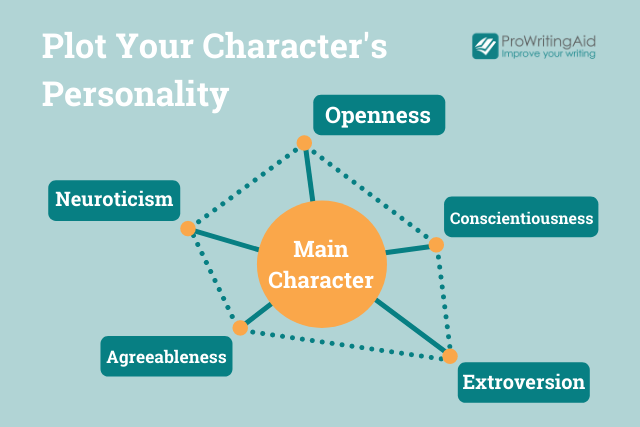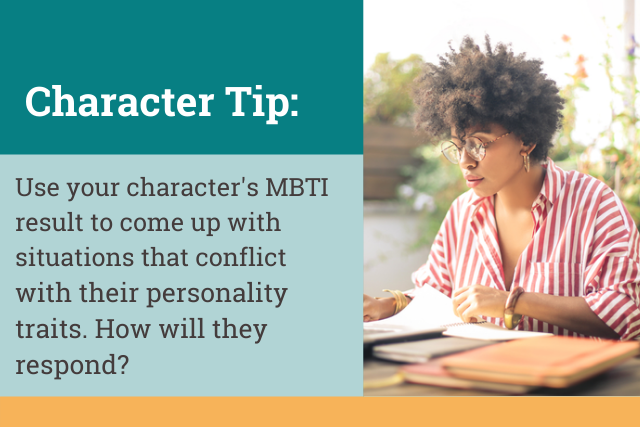
No matter how fascinating your plot or magical your world, your readers won’t engage if you don’t have compelling characters.
Characters drive your story forward. They are how readers relate to your story because they see parts of themselves or people they know in them. Even in stories that are more plot-driven, characters who are interesting are vital.
You want your characters to have more than a physical appearance. In fact, if your character is intriguing enough, your readers won’t even care about the physical description; they’ll fill in the blanks in their mind.
Your characters need personality traits and flaws, motivations, secrets, and more.
I’ve compiled five creative writing exercises to develop strong, compelling characters. But first, let’s look at the basics that every character needs.
Download our 50 page guide to writing characters your readers will adore (or despise) for FREE.
Character Basics
The most important part of your character is what motivates them. It is your protagonist’s inner motivation that creates conflict in your plot, allowing you to raise the stakes and introduce obstacles along the way.
There are three questions you should ask yourself:
- What does my character want or desire?
- What will happen if my character doesn’t achieve this?
- What is standing in the way of my character achieving their goals?
Once you can answer these questions, you can go deeper with your characterization. This is where you choose positive traits and character flaws. Your character might have an emotional wound in their past that dictates their actions. Find out what made your character who they are.
5 Fun Strategies for Crafting Characters
There are tons of character inventory templates on the internet, and they are all pretty much the same. This article will provide you with creative, unique ideas to help you get to know your characters and break the mould.
1. Use the Big Five Personality Chart
If you love personality psychology, then use the Big Five model for defining your characters’ personalities. The Big Five is the only personality typing accepted by professional psychologists. It’s based on five traits, and the results are on a spectrum, because humans aren’t easily lumped into categories. Everyone has all five traits; it is the degree of each that is unique to us.
Openness refers to how open a person is to new ideas and experiences. Conscientiousness is related to thoughtfulness, need for structure, and organization. Extroversion relates to how much energy you gain or lose in social situations and how much alone time you need. Agreeableness is exactly what it sounds like: how easy you are to get along with. Neuroticism relates to how you deal with stress and how often you experience negative moods.
Plot your characters’ personalities on a chart like the one below to give yourself a handy visual representation of their characterisation.

You might even plot several charts for different parts of your story so you can see how your characters evolve and remind yourself to do the work to get them there.
2. Answer Questions As Your Character
You are Oprah. Your character is due for a tell-all interview. What will you ask them? You can start with the basics about their life and move into some light-hearted questions. But like any good Oprah special, your audience wants to know the nitty-gritty. Ask them hard personal questions. How will they answer you? How will they react to these questions? You might find that your characters are reticent or defensive instead of warm and forthcoming.
Last March, I had the opportunity to attend a reading, Q&A, and book signing with bestselling dark fantasy author Anne Bishop. She said she likes to take her characters “out for coffee.” You can learn a lot about a person by going out for coffee with them, she says. It’s like getting to know a new friend. You can see how they act in public settings while still getting an opportunity to have a personal conversation.
Here are a few ideas for character interview questions:
- What do you order at the bar?
- What is your morning routine?
- Tell me about your family.
- What was your relationship with your parents like?
- Do you believe people are inherently good?
- How do you think people see you, and how do you want them to see you?
- What is your greatest fear?
3. Plot Your Characters on the Moral Alignment Scale
Fans of role-playing games will be familiar with this quick way to categorize your characters. The moral alignment scale is based on a 3x3 matrix. The point at which these intersect determine your character’s morality.
Your character can be good, evil, or neutral. They can also be lawful, chaotic, or neutral.
If your character is good, they will sacrifice for others or go out of their way to do the right thing. Evil is, well, evil. Neutral in this sense refers to a character who is not evil but will not always go out of their way to help others.
Lawful characters have a respect for authority and tradition and abide by a set of laws, whether set by themselves or others. They can be rigid and do not do well without structure. Even a lawful evil character acts within their own set of rules and traditions.
Chaotic characters are more open and flexible with regards to laws, but this makes them more unpredictable. Neutral characters fall somewhere in the middle.
Where do your characters fall on the moral alignment scale?
4. Use the Myers-Briggs Type Indicator
One of the most popular personality assessments is the Myers-Briggs type indicator, or MBTI. While modern psychologists have largely debunked the science behind it, it remains an interesting way to take inventory of yourself. You can also figure out the MBTI of your characters, which can give you a solid basis for the way they act in different situations.
MBTI is based on four major categories. Each category has two ends of the spectrum, and the assessments tell you which of each of these you most identify with. The categories are extroversion/introversion, intuition/sensing, thinking/feeling, and judging/perceiving. Take an MBTI assessment here.

5. Throw Your Characters into an Alternate Universe
This character development involves some actual writing, although it likely won’t make it into your story. Drop your characters into an alternate universe. Keep their personalities and desires the same but have them interact in an entirely unfamiliar setting. Then write a short story or flash fiction about how they react and adapt.
You can put your characters in today’s real world or send them to a deserted island. Maybe they end up in a dungeon and have to escape, or they somehow find themselves in outer space. Staying true to your characters outside of the world you’ve created for them will ensure that your characters aren’t just props in your novel’s setting; they are fully-developed fictional people.
Who is your favorite character in your current work-in-progress? Tell us about them in the comments.


